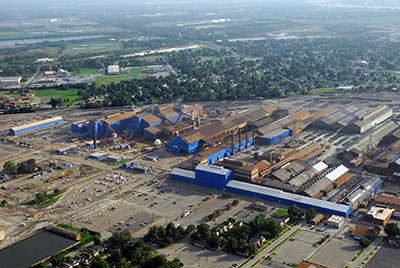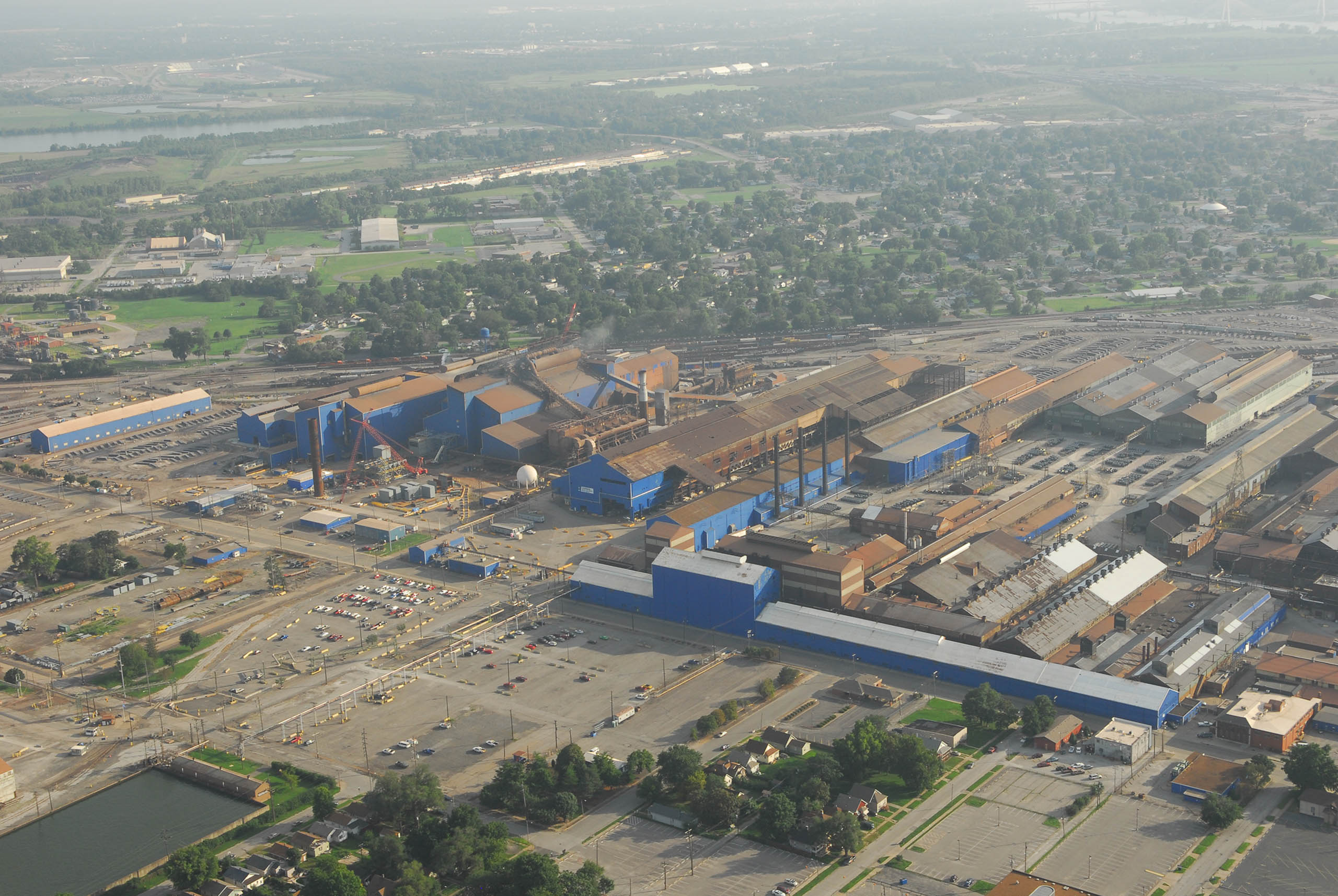



Lying adjacent to the banks of Horseshoe lake on the East side of Granit city are the huge furnaces, flames, and smoke of the US Steel plant. Arrayed along Edwardsville Road are the blast furnaces and coke plants that transform coal into coke for the use in the production of pig iron. Here you can find the indomitable blue-flame—one of the chthonic icons of this region.
At times, the vast steelmaking complex and its associated towns do not register much differently than they did to the WPA era authors of the Illinois Guide:
Here the great plants of heavy industry spread over acres of prairie, and fill the air with their dirt and din and pungent smells. Tall stacks rise darkly against the sky and pour their smoke across the sun. The smoke pall is heavy on the land, and on the faces of the people is written the strife and strain of the factories. It is a rough, alien land of many races, a melting pot of steel and bone. Granite City, Madison, and Venice, known locally as the Tri-Cities, are principal units of this industrial area. At their best they are communities in which steel workers have built stout churches, good schools, and substantial bungalows; at their worst they are cindery wastelands broken by mill buildings and rows of grimy frame cottages.*
The original plant at this site began as the Granite City Steel Works in 1895 as the sole supplier of rolled steel sheets to the stamping and enameling plant across town. For much of the 20th century, it remained a local producer, until WWI when it was contracted to roll steel for a new fleet of steel-hulled ships patrolling domestic waters. Following the war, organized labor established a strong presence among the steelworkers of the country, and a 1946 strike closed the plant for 5 months in a significant episode of labor history in the American Bottom.
1951 marked an industrial transition from a partially integrated to a fully integrated steel mill, when the company bought the blast furnaces of Koppers Company. This consolidation, along with other improvements, doubled annual output of the plant.
Because of the energy cost and structural stress associated with heating and cooling a blast furnace, typically these primary steelmaking vessels will operate on a continuous production campaign of several years duration. Even during periods of low steel demand, it may not be feasible to let the blast furnace grow cold, though some adjustment of the production rate is possible. Nonetheless, in 2008-9, US Steel idled its plant here for the first time in its 110 year history.
*Federal Writers' Project. Illinois: Discriptive and Historical Guide. Chicago, WPA Federal Art Project, 1940.